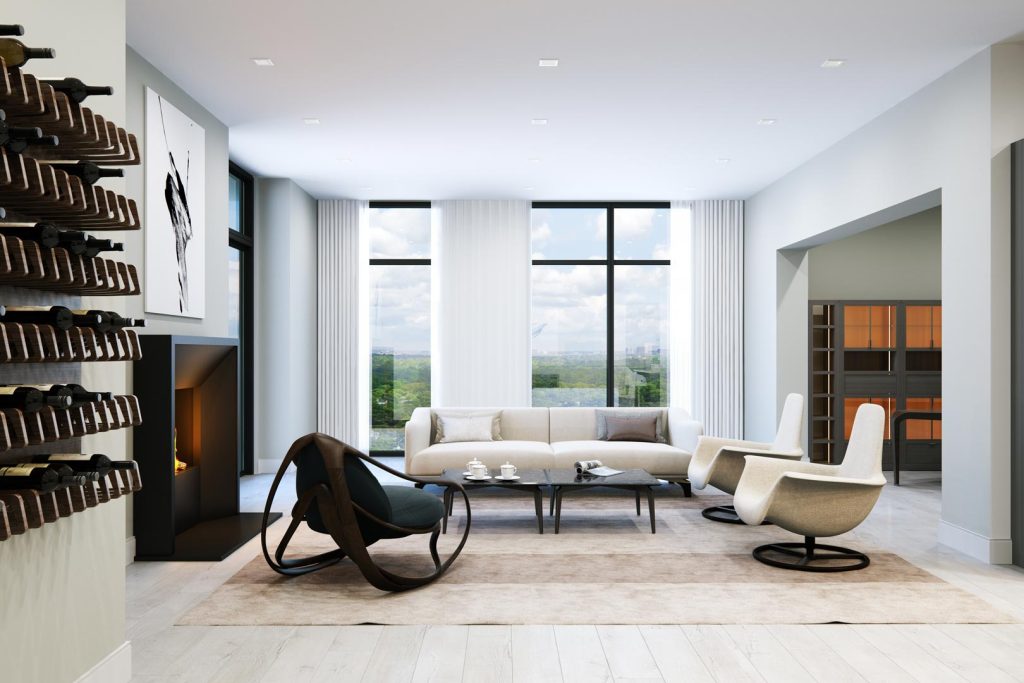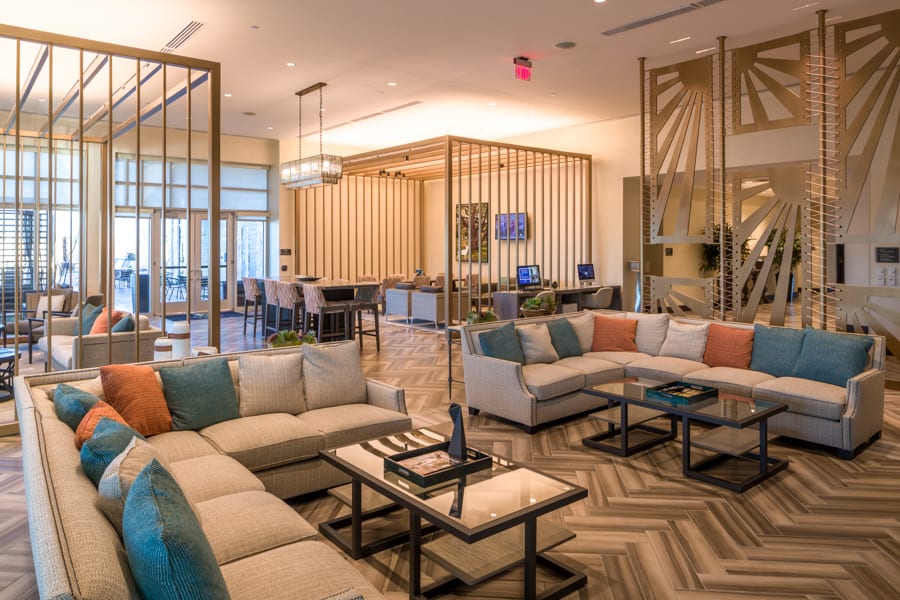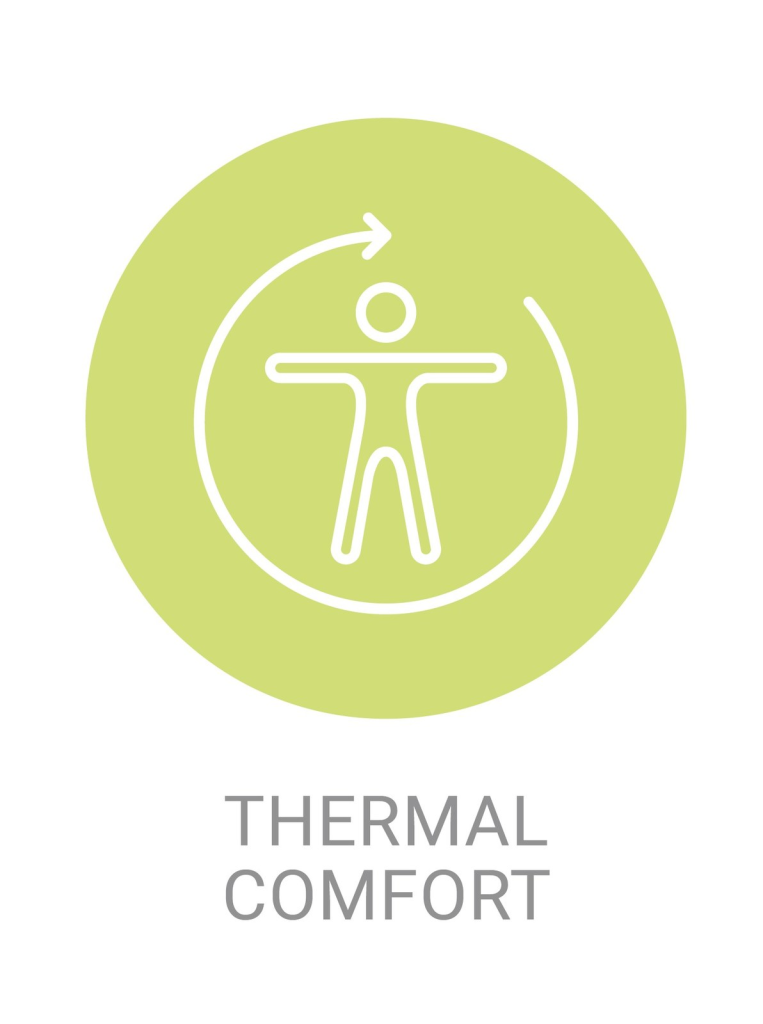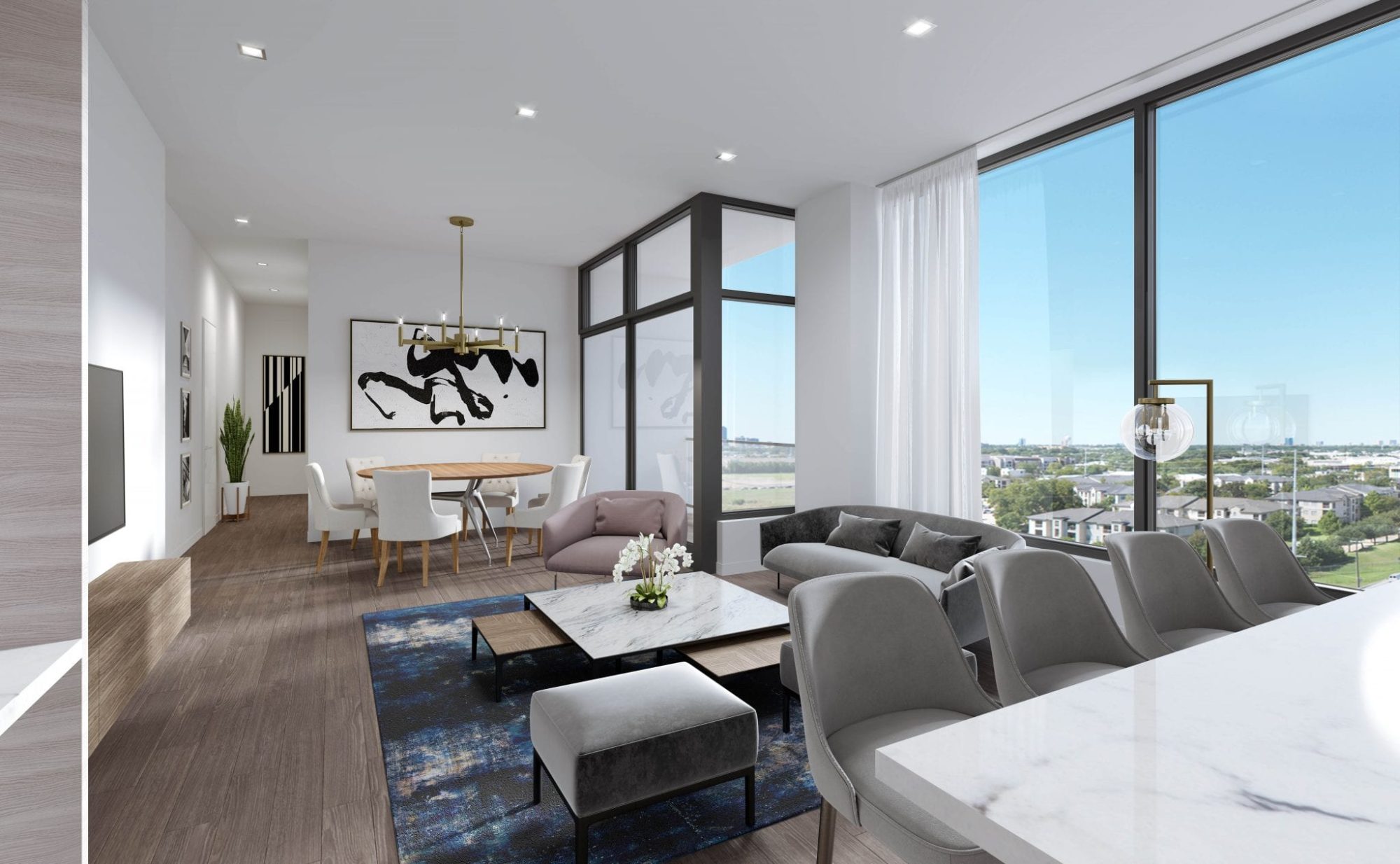“Thermal comfort is linked to our health, well-being, and productivity and is ranked as one of the highest contributing factors influencing overall human satisfaction in buildings. Due to its influence on the integumentary, endocrine, and respiratory body systems, thermal comfort can impact multiple health outcomes. For example, exposure to cold air and sudden temperature change can trigger asthma in adults. […] Thermal discomfort is also known to play a role in sick building syndrome symptoms, which will similarly cause decreases in productivity.”
– WELL v2 Building Standard Reference Guide, Thermal Comfort

“We shape our buildings; thereafter they shape us.”
– Winston Churchill
When we talk about thermal comfort, we’re not just talking about temperature. What really talking about is the relationship between ourselves and our indoor environment. In essence, a well-executed design will feel good and comfortable to be in, which is one less thing for your brain and body to worry about! By providing occupants with a sense of satisfaction with their thermal environment, they gain freedom from unnecessary stress, discomfort, and distraction that goes along with feeling too hot or too cold in a space.
In the A/E/C industry we design and create buildings. One of the main functions of a building is to act as a controlled environment that is separate from the surrounding exterior conditions. As designers, we have the opportunity to create an environment that is both comfortable and health-promoting for our future building occupants.
While it seems like a simple and intuitive concept, the specifics of thermal comfort are actually complex to define. This is because thermal comfort is primarily a condition of the mind, meaning it will vary by a certain degree from person to person. So in reality, the goal is not only to deliver a space of certain conditions but also to deliver occupants with a certain state of mind.
Since the feeling of comfort is ultimately subjective, rather than a purely physical condition, it is wise to reference the WELL v2 standard’s recommended strategies to optimize spaces for thermal comfort and maximize the health, productivity, and wellness of building occupants.

Health and Well-Being in the Built Environment, Concept 6: Thermal Comfort
Issue: Our thermal environment plays a major factor in the way we experience places where we live and work. Thermal comfort influences our levels of health, well-being, and productivity, and is ranked as one of the highest contributing factors influencing overall human satisfaction in buildings.
Health Implications: Due to its influence on the integumentary, endocrine and respiratory body systems, improper thermal control can contribute to health outcomes such as asthma, sick building syndrome, environmental dissatisfaction, and diminished productivity.
Solution: Through HVAC design and controls, individually controlled thermal environments can be created for building occupants. New building control apps will even allow people to “vote” and to directly influence the operation of HVAC systems and thermal comfort.
 WELL v2 Standard’s Recommended Strategies:
WELL v2 Standard’s Recommended Strategies:
- Monitoring thermal parameters such as dry-bulb temperature, relative humidity, airspeed, and mean radiant temperature in regularly occupied spaces
- Achieving Predicted Mean Vote (PMV) levels within +/- 0.5 and Percentage of People Dissatisfied (PPD) ≤10% during a minimum of 98% of the standard occupied hours of the year
- Designing to ASHRAE 55-2013, ISO 7730:2005, or EN 15251:2007 Standards
- Ensuring thermostat control for all regularly occupied spaces, and having a minimum of 1 thermal zone per 650 ft2or per 10 occupants (whichever results in fewer thermal zones)
- Positioning temperature sensors at least 3.3 ft away from direct sunlight, air supply diffusers, mechanical fans and heaters and away from exterior walls, windows, and doors or any other significant source of heat or cold
- Ensuring that all regular building occupants have control over temperature through either thermostats within the zone or a digital interface available via phone or computer
- Providing a thermal variation of at least 5°F across open workspaces over 2,150 ft2, between rooms with more than 10 people, and/or between floors
- Providing personal thermal comfort devices such as personalized fans, heated/cooled chairs, and others, except combustion-based space heaters to provide individual user control of airspeed, air temperature and/or mean radiant temperature
- Implementing radiant systems for at least 50% of the floor area of regularly occupied spaces within the project boundary
- Implementing Dedicated Outdoor Air Systems
- Monitoring the thermal environment and comfort parameters such as dry-bulb temperature, relative humidity, airspeed, and mean radiant temperature in regularly occupied areas within the building to be used as feedback for building managers and users to take appropriate actions
- Conducting a post-occupancy survey at least twice a year for all regular building occupants to assess overall satisfaction with thermal performance
- Ensuring that individual thermal preferences are met by granting occupants with personal thermal comfort devices and flexible dress codes
- Implementing a real-time display of dry-bulb temperature and relative humidity to building occupants through a screen monitor, website, or phone application
- Providing humidity control to spaces to ensure that relative humidity levels are kept between 30% and 60% for at least 98% of all business hours in a year
Summary
Thermal comfort is about more than just thermostats and HVAC equipment. Experts in the field are quick to remind us that thermal comfort always comes back to an individuals’ perception of comfort at any given moment. This can be influenced by a variety of physiological, psychological, and environmental conditions.
When delivering a high-performance design for thermal comfort, it is important to keep in mind that you are creating a flexible and dynamic environment that can adapt to the needs of building occupants based not only on one specific code or guideline but on the individual preferences of the occupants over the course of their day.
By creating environments where people feel thermally comfortable, we can improve the health, productivity, and wellness of building occupants while also improving the function of our endocrine, integumentary, and respiratory systems.
Hero image at top of page:
The Westmore Condominiums | The Mirador Group | Houston, Texas

